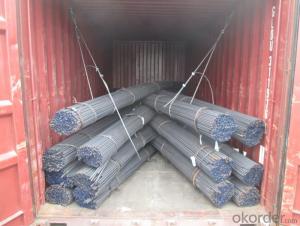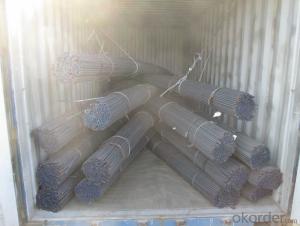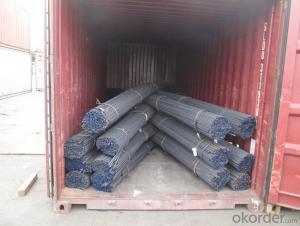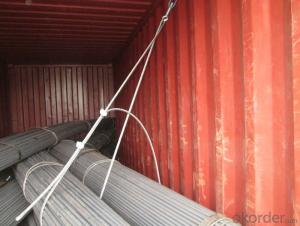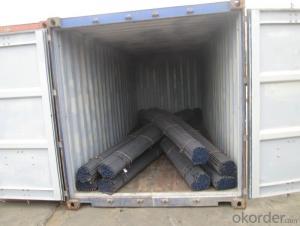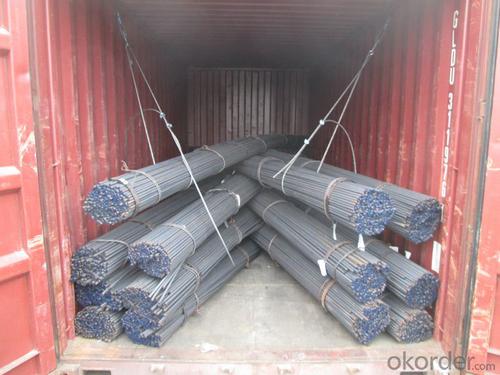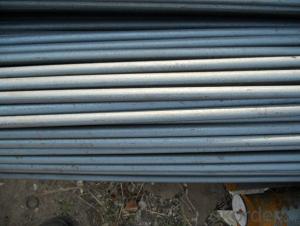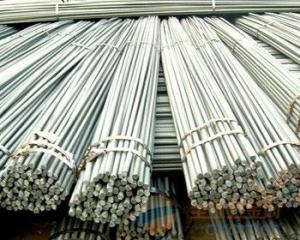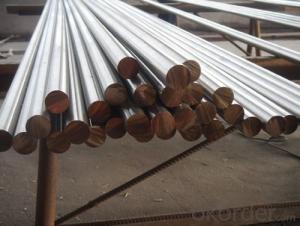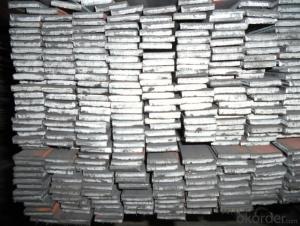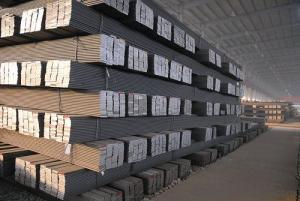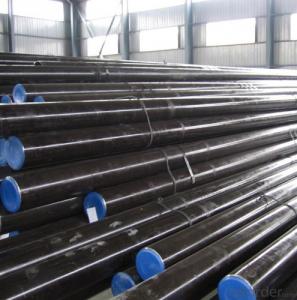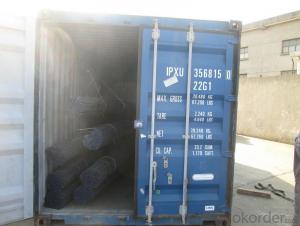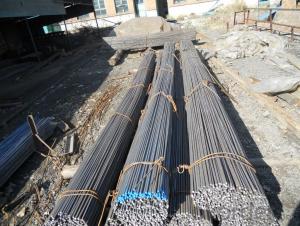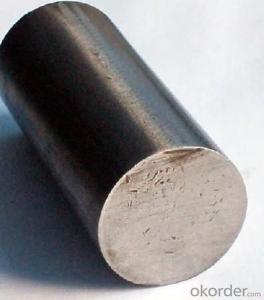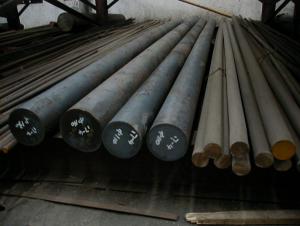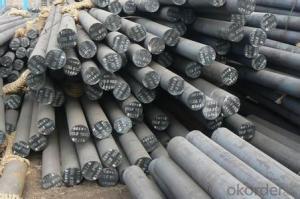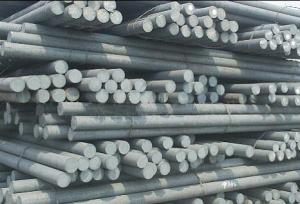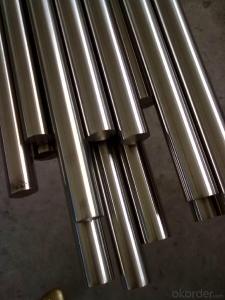JIS G3101 SS400 Spring Steel Bar with high quality
- Loading Port:
- Tianjin
- Payment Terms:
- TT or LC
- Min Order Qty:
- 25 m.t
- Supply Capability:
- 10000 m.t/month
OKorder Service Pledge
OKorder Financial Service
You Might Also Like
Specification
Product Description:
OKorder is offering Spring Steel Bar with high quality at great prices with worldwide shipping. Our supplier is a world-class manufacturer of steel, with our products utilized the world over. OKorder annually supplies products to European, North American and Asian markets. We provide quotations within 24 hours of receiving an inquiry and guarantee competitive prices.
Product Applications:
Spring Steel Bar with high quality are ideal for structural applications and are widely used in the construction of buildings and bridges, and the manufacturing, petrochemical, and transportation industries.
Product Advantages:
OKorder's Spring Steel Bar with high quality are durable, strong, and resist corrosion.
Main Product Features:
· Premium quality
· Prompt delivery & seaworthy packing (30 days after receiving deposit)
· Corrosion resistance
· Can be recycled and reused
· Mill test certification
· Professional Service
· Competitive pricing
Product Description:
Spring Steel can be divided into two types. One is carbon spring steel, and other one is alloy spring steel.
Alloy spring steel is based on carbon spring steel, by adding one or more alloying elements to improve the mechanical properties, hardenability and other properties to meet the requirement for manufacture all kinds of spring steel.
Specification of Spring Steel Bar:
-Material: SUP6
-Standard: JIS
-Production: Hot rolled or cold rolled
-Type: Spring Steel
-Alloy or no: Alloy
-Micro Structure: Tempered troostite
Mechanical Properties:
-Tensile Strength σb (MPa): ≥1274 (130)
-Yield Strength σs (MPa): ≥1176 (120)
-Elongation δ10(%): ≥5
-Percentage reduction of area: ψ (%): ≥25
-Hardness:
1, Hot rolled, ≤321HB
2, Cold drawn + Heat treatment: ≤321HB
Usage/Applications of Spring Steel Bar:
-This is silicon-manganese spring steel that is used widely. Its strength, elasticity and hardenability are little higher than 55Si2Mn.
- Products of this material are used as flat spring o spiral spring with diameter less than 30mm that bear a large load during the fabrication of trains, cars and tractors.
-The principal material of valve spring.
Packaging & Delivery of Spring Steel Bar:
-Packing Detail: The products can be packed in bundles by steel wires.
-Marks: We will make color marks to make sure that it’s more convenient for customers to distinguish their products from other products at the destination port and we will tie tag marks up to each bundle to make sure that customers know the specifications of each bundle like product’s name and size and other information of products.
-Delivery Detail:
1, Delivery time: 30~45 working days after receive buyer’s T.T. or L/C.
2, Delivery status should be written in the contract. (Heat treatment or no)
Transportation:
1, The products can be delivered by bulk vessel or by container. As for container, products with the length of 6m will be loaded in 20’ container, with 9m or 12m, in 40’ container.
2, The maximum quantity of loading of container is 25 tons.
3, The products are usually transported to the nearest port from the production place.
FAQ:
Q1: Why buy Materials & Equipment from OKorder.com?
A1: All products offered byOKorder.com are carefully selected from China's most reliable manufacturing enterprises. Through its ISO certifications, OKorder.com adheres to the highest standards and a commitment to supply chain safety and customer satisfaction.
Q2: How do we guarantee the quality of our products?
A2: We have established an advanced quality management system which conducts strict quality tests at every step, from raw materials to the final product. At the same time, we provide extensive follow-up service assurances as required.
Q3: The products are invoicing on theoritical weight or on actual weight?
A3: We can do it in both manners, according to the customers' request.
Image:
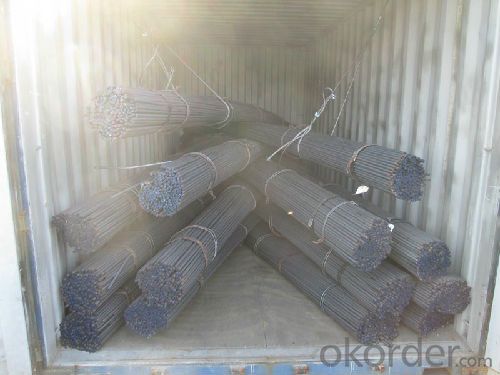
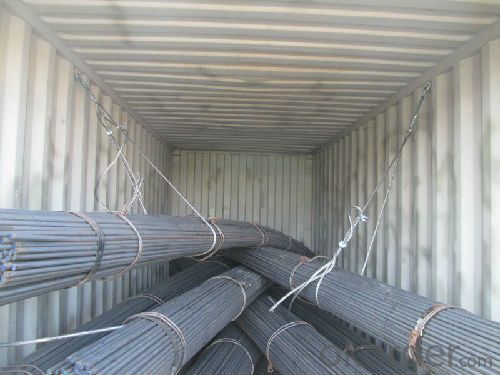
- Q: Can steel round bars be used for making agricultural equipment or machinery?
- Yes, steel round bars can be used for making agricultural equipment or machinery. Steel is a commonly used material in the construction of such equipment due to its high strength, durability, and resistance to wear and tear. Steel round bars can be used to manufacture components like axles, shafts, handles, and structural supports, providing the necessary strength and reliability required for agricultural applications.
- Q: Difference between forging and round steel
- The advantages of a casting include an extensible length, a contracted cross section, a contracted length, an extended cross section, a variable length, and a variable cross section. The types of casting are free forging / hand forging, hot die forging / precision forging, top forging, roll forging and die forging.Forgings are not limited to round shapes.Round steel is a solid strip of steel whose cross section is round. The specifications are expressed in millimeters of diameter, such as "50", which means a round bar of 50 millimeters in diameter.Round bar is divided into three parts: hot rolling, forging and cold drawing. Standard Specification for hot rolled round steel is 5.5-250 mm. Of them: 5.5-25 mm small round bars are mostly supplied by straight strips. They are used as reinforcing bars, bolts and various mechanical parts. They are more than 25 millimeters of round steel. They are mainly used in the manufacture of mechanical parts or seamless steel tube billets.
- Q: How do you calculate the torsional strength of a steel round bar?
- To determine the torsional strength of a steel round bar, it is necessary to take into account its material properties and dimensions. The torsional strength, also referred to as torsional yield strength or shear strength, denotes the maximum torque or twisting force that a round bar can endure without experiencing permanent deformation or failure. The torsional strength can be calculated using the following formula: Torsional Strength = (Torsional Constant * Yield Strength) / (Polar Moment of Inertia * Length) 1. Torsional Constant: This constant relies on the shape of the round bar's cross-section. In the case of a solid round bar, the torsional constant is given by (π * D^4) / 32, where D represents the bar's diameter. 2. Yield Strength: This is the stress at which the steel material starts to plastically deform. It is typically provided by the manufacturer or can be determined through material testing. 3. Polar Moment of Inertia: This property signifies the round bar's resistance to torsional deformation. For a solid round bar, the polar moment of inertia equals (π * D^4) / 32. 4. Length: This denotes the extent of the round bar where the torsional force is applied. By substituting these values into the formula, the torsional strength of the steel round bar can be calculated. It is important to note that this computation assumes the round bar is completely homogeneous, devoid of any defects, and subjected solely to pure torsion. It is crucial to bear in mind that torsional strength is just one factor to consider when assessing the suitability of a steel round bar for a specific application. Other considerations, such as fatigue strength, corrosion resistance, and load-bearing capacity, should also be taken into account. For accurate calculations and appropriate material selection, it is advisable to consult a professional engineer or refer to pertinent industry standards.
- Q: What are the different types of steel round bar surface finishes used in the construction industry?
- Steel round bars are widely used in the construction industry due to their strength and durability. To meet specific requirements and enhance performance, these bars undergo various surface finishes. Some common surface finishes used in construction include: 1. Hot Rolled Finish: The most commonly used finish involves heating the steel bar above its recrystallization temperature and rolling it through rollers. This process creates a rough and scale-covered surface. 2. Cold Drawn Finish: This process involves drawing the steel bar through dies to reduce its diameter and increase its length. Cold drawing produces a smooth and shiny surface, ideal for applications where aesthetics and precision are important. 3. Peeled and Polished Finish: This finish includes removing the outer layer of the steel bar through peeling and polishing it to achieve a smooth and mirror-like surface. It is often used in applications that require high visual appeal, such as architectural structures or decorative elements. 4. Ground Finish: Grinding is used to achieve a smooth and uniform surface finish on steel round bars. The process removes imperfections and unevenness, resulting in a precise and polished surface. Ground finishes are commonly used in applications that require tight tolerances, such as machinery or automotive components. 5. Coated Finish: Steel round bars can be coated with various materials, such as galvanized, epoxy, or powder coatings, to enhance corrosion resistance and provide additional properties. These coatings not only protect the steel from environmental factors but also improve its aesthetic appeal. Each surface finish offers unique advantages and is chosen based on specific project requirements. Whether it's for aesthetics, corrosion resistance, or tolerances, selecting the right surface finish is crucial to ensure optimal performance of steel round bars in their intended applications.
- Q: What are the advantages of using shock-resistant steel round bars?
- There are several advantages of using shock-resistant steel round bars in various applications. Firstly, shock-resistant steel round bars are designed to withstand high impact and shock loads, making them ideal for use in industries such as construction, automotive, and manufacturing. This property of shock resistance ensures that the round bars remain intact and maintain their structural integrity even under extreme conditions. Another advantage of shock-resistant steel round bars is their enhanced durability. These round bars are made from high-quality steel alloys that have been specifically engineered to provide superior strength and resistance to wear and tear. This makes them highly resistant to bending, cracking, and fracture, ensuring a longer lifespan compared to regular steel round bars. Additionally, shock-resistant steel round bars offer improved safety in applications where there is a risk of impact or sudden loads. By using these round bars, the likelihood of structural failure or catastrophic accidents is significantly reduced, providing a greater level of security for both workers and the overall operation. Moreover, shock-resistant steel round bars are known for their excellent machinability and weldability. This means that they can be easily shaped, cut, and welded to meet specific requirements, allowing for versatility in design and manufacturing processes. This ease of manipulation makes them a preferred choice for various projects where customization is necessary. Furthermore, shock-resistant steel round bars offer cost-effective solutions. Due to their high durability and resistance to wear, they require less frequent replacements, resulting in reduced maintenance and replacement costs. Additionally, their ability to withstand shock loads reduces the need for additional reinforcement or support structures, further reducing overall project expenses. In conclusion, the advantages of using shock-resistant steel round bars include high impact resistance, enhanced durability, improved safety, excellent machinability, and cost-effectiveness. These properties make them a reliable and efficient choice for a wide range of applications, ensuring long-lasting and reliable performance.
- Q: Can steel round bars be used in the fabrication of machinery?
- Yes, steel round bars can definitely be used in the fabrication of machinery. Steel round bars are commonly used in the manufacturing industry for various applications, including the fabrication of machinery and equipment. They possess several desirable properties that make them suitable for this purpose. Firstly, steel round bars offer excellent strength and durability. They are known for their high tensile strength, which means they can withstand heavy loads and resist deformation. This strength is crucial in machinery fabrication, as the components of machinery need to be able to endure the stresses and forces that they will be subjected to during operation. Additionally, steel round bars have good machinability, which means they can be easily shaped and formed into the desired components for machinery. This makes them highly versatile and allows for the creation of complex and intricate machine parts. Furthermore, steel round bars have good resistance to corrosion and wear, which is essential in machinery fabrication. Machinery often operates in harsh environments or comes into contact with various substances, such as chemicals, oils, or abrasive materials. The corrosion and wear resistance of steel round bars ensure that the fabricated machinery can withstand these conditions and maintain its performance over time. Lastly, steel round bars are readily available and cost-effective. They can be easily sourced from suppliers and manufacturers, making them a practical and economical choice for machinery fabrication. Overall, steel round bars are a popular and reliable material for the fabrication of machinery. Their strength, machinability, resistance to corrosion and wear, and availability make them an ideal choice for creating durable and high-performing machine components.
- Q: Are steel round bars resistant to abrasion?
- Steel round bars are typically resistant to abrasion. Steel is renowned for its strength and durability, allowing it to withstand the effects of friction and contact with other surfaces. However, the degree of abrasion resistance can differ based on the particular steel type and composition. Some steel grades, like hardened or alloy steels, are specifically engineered to possess enhanced resilience against abrasion. These steels undergo procedures like heat treatment or alloying to enhance their hardness and augment their ability to endure abrasion. All in all, steel round bars are a dependable option for situations where abrasion resistance is crucial.
- Q: How do steel round bars compare to carbon fiber round bars?
- Steel round bars and carbon fiber round bars are materials commonly used in various industries, but they differ in several aspects. Strength and Durability: Steel round bars are renowned for their exceptional strength and durability, enabling them to withstand heavy loads, high temperatures, and harsh environments. On the other hand, carbon fiber round bars are also strong but generally not as strong as steel bars. However, they have a remarkable strength-to-weight ratio, making them a popular choice when weight reduction is crucial. Weight: One noticeable difference is the weight. Steel round bars are significantly heavier compared to carbon fiber round bars. This weight disparity often makes carbon fiber bars more preferable in industries where reducing weight is important, like aerospace and automotive sectors. The use of lighter bars can contribute to improved fuel efficiency, increased speed, and enhanced maneuverability. Corrosion Resistance: Steel round bars are susceptible to corrosion, especially when exposed to moisture and specific chemicals. Regular maintenance and protective coatings are often necessary to prevent rusting. Conversely, carbon fiber round bars possess inherent corrosion resistance. This property makes them valuable in environments where corrosion is a concern, such as marine applications. Flexibility and Stiffness: Steel round bars are generally stiffer and less flexible compared to carbon fiber round bars. This characteristic is advantageous in applications where rigidity and structural integrity are crucial, like construction and heavy machinery. In contrast, carbon fiber round bars offer higher flexibility and can be engineered to have varying levels of stiffness, making them suitable for applications requiring vibration damping or enhanced shock absorption. Cost: In terms of cost-effectiveness, steel round bars usually have the upper hand. Steel is widely available, and its production costs are relatively low. Carbon fiber, however, is more expensive to produce due to the complex manufacturing process and the cost of raw materials. Consequently, carbon fiber round bars tend to be pricier and are limited to industries where their unique properties justify the increased costs. In conclusion, steel round bars and carbon fiber round bars have their own advantages and disadvantages. Steel bars offer exceptional strength, durability, and cost-effectiveness, while carbon fiber bars excel in weight reduction, corrosion resistance, flexibility, and stiffness. The choice between the two depends on the specific requirements of the application, including factors such as load-bearing capacity, weight reduction, corrosion resistance, and cost considerations.
- Q: Can steel round bars be used for making control arms?
- Yes, steel round bars can be used for making control arms. They are commonly used in the automotive industry as they provide strength, durability, and stability required for control arm applications.
- Q: What are the standard sizes of steel round bars?
- The sizes of steel round bars can vary depending on the country and specific industry standards. Typically, these bars come in a wide range of diameters, starting from 6mm (0.24 inches) and going up to 400mm (15.75 inches) or even larger. For commercial purposes, commonly used sizes include 10mm (0.39 inches), 12mm (0.47 inches), 16mm (0.63 inches), 20mm (0.79 inches), 25mm (0.98 inches), and 32mm (1.26 inches). However, it's important to note that these sizes may differ in various regions and industries. Additionally, specialized applications may require unique dimensions. Therefore, it's always advisable to refer to the relevant industry standards or consult with suppliers to determine the specific standard sizes for steel round bars in a particular context.
Send your message to us
JIS G3101 SS400 Spring Steel Bar with high quality
- Loading Port:
- Tianjin
- Payment Terms:
- TT or LC
- Min Order Qty:
- 25 m.t
- Supply Capability:
- 10000 m.t/month
OKorder Service Pledge
OKorder Financial Service
Similar products
Hot products
Hot Searches
Related keywords
